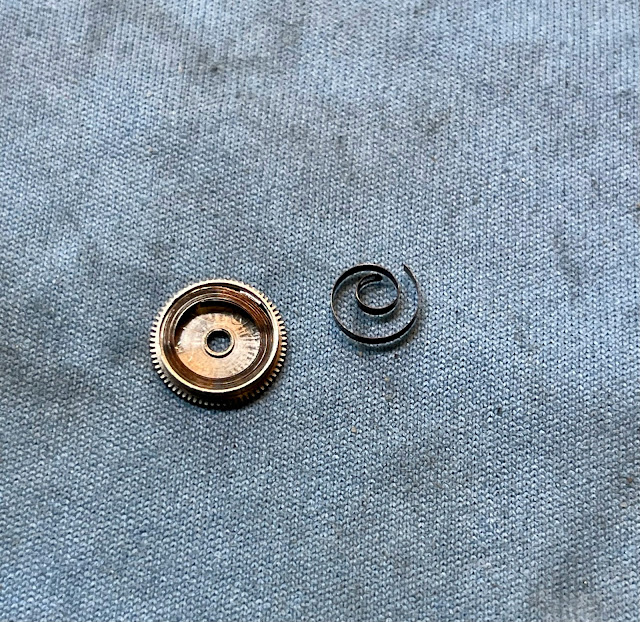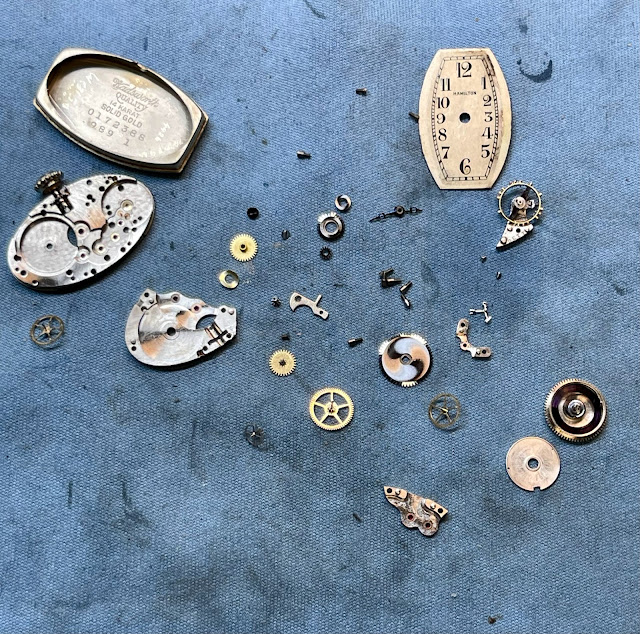I don't focus on ladies watches. To be honest, there are way too many of them, they tend to be very small, and they all start to look alike. I don't think that I'm alone in that sentiment. On any given day of the week you can see them for sale on eBay for under $20.
Of course, there are exceptions to every rule, some ladies models have their appeal. That said, they are so small that I really don't enjoy working them.
Ladies models have high quality movements though, you could even go as far as to say they are exceptional quality because they are so small and yet just as accurate as any men's model of the day.
One thing I will say for ladies models is if you want to develop skills as a hobbyist watchmaker, you can easily purchase working movements to develop your skills on. You'll likely by 50 and have 3 working movements when you're finished, but you will definitely develop excellent fine motor skills.
I was recently asked by a collector to work on his Parker B and he sent along his wife's 1930 Chevy Chase D. I figured I would showcase it on the blog because it uses a movement that also powers a men's model.
The Chevy Chase D was introduced in 1930 and made through 1932. As you would surmise from the name, there are several Chevy Chase models, the last of which was produced through 1936.
The catalog shows that most women's models of the time used a ribbon strap. I presume it was made of silk, and it included a nice clasp.
The Chevy Chase D was one of a number of models to utilize the new-to-1930 17 jewel grade 989. The 989 is an 18/0 size caliber. Hamilton also introduced ladies models featuring diamonds - those are some of the most popular ladies models but you have to be careful to ensure they are legitimate Hamilton watches.
The 989 was eventually used in the
1936 Norfolk. The Norfolk is interesting in that it was one of the few men's models to NOT have a second hand.
The Chevy Chase D features a solid 14K gold case with black enamel in the engraved bezel. Ladies models with enamel are almost as popular as diamond models, perhaps even more so when they feature colors other than black.
Even the crown on this watch is engraved. This is a very pretty watch. However, it is not running.
The case is a two piece design with the front bezel snapping onto the case back. You have to be very careful lifting the movement out of the case, as you'll see in a moment.
Two small screws secure the dial to the main plate and I'll get that out of the way first.
As you can see in the shot below, the balance on a 989 is precariously installed near the end of the oval-shaped movement. It's very exposed and the balance staff is extremely easy to damage if you are not super-careful. This balance appears to swing nicely though.
In this time period Hamilton didn't always put it's name inside the case. Normally you'd expect to see Hamilton Watch Co Lancaster PA inside but in this situation that is not the expectation.
Here's the reason the watch is not running - the mainspring is clearly broken.
I have a replacement but it's not a Dynavar spring. Hopefully it will do the trick.
Everything is cleaned and dried, just like a men's movement. However, the parts are so small, that the entirety of the disassembled movement doesn't take up much space.
My camera doesn't show it but the movement is now ticking away with good motion. I had beads of sweat on my forehead trying to get this back together without breaking anything.
The movement is running with good amplitude. It's running a smidgen fast and the bear error is just above what I like to see but in this situation it will have to do. I really don't want to risk damaging the movement by pursuing perfection. Good is good enough.
The reassembled watch looks pretty much the same as what I started with. However, it's now running and is ready for some small-wristed wrist time.








































